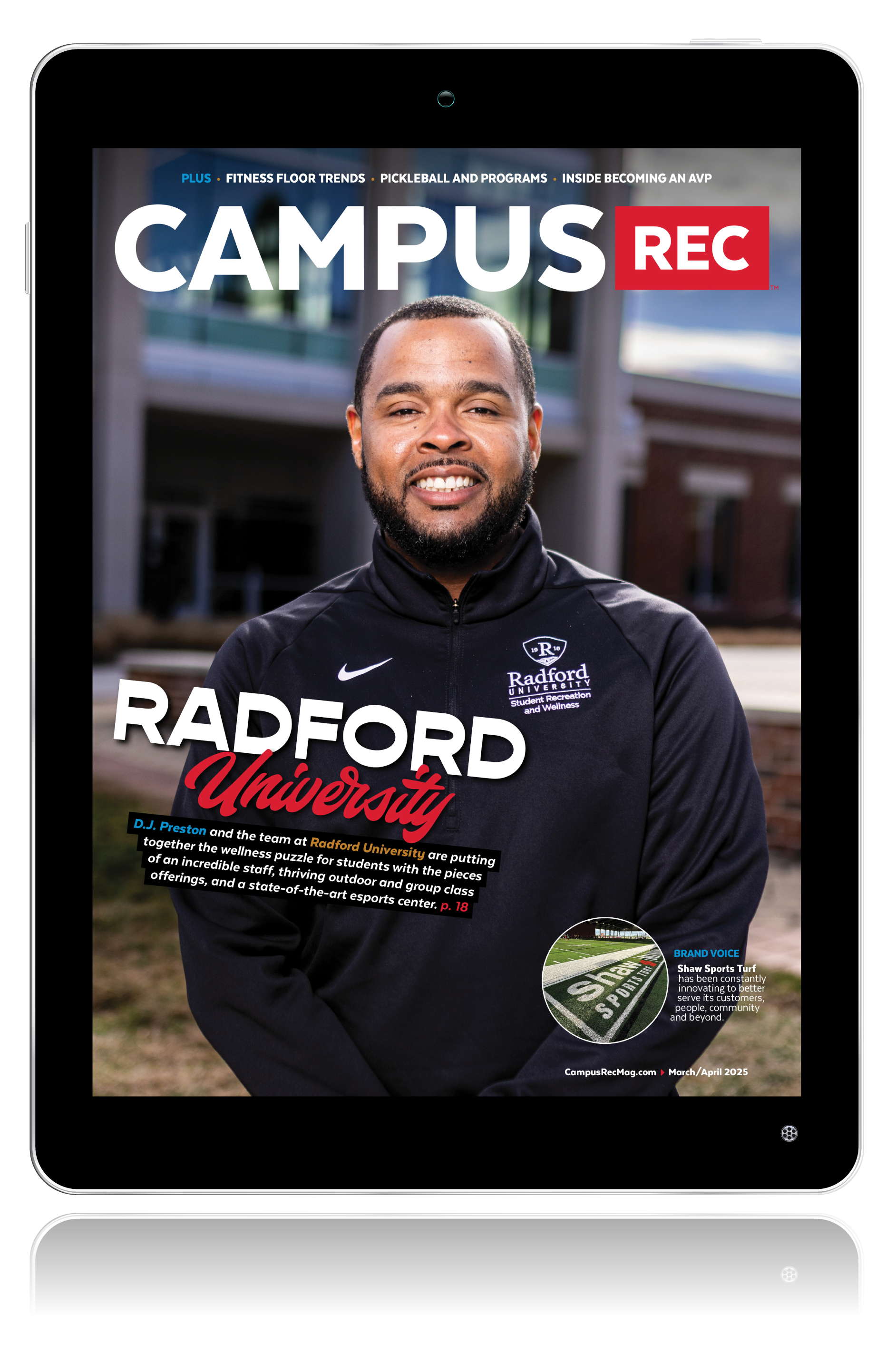My first reaction when I saw the James Madison University Recreation Center from the highway was, “Is that a Japanese steak house?”
Just kidding. But Eric Nickel, the director of university recreation at James Madison, explained there was confusion when the center got its facelift. Those driving by on the highway weren’t sure what it was; he said it does indeed look like a Japanese steak house. So they had to put the words “University Recreation Center” across the front façade.

It’s stories like the above that are the reasons behind why I love touring rec centers across the country. As the directors, you often have some of the best insights. Whether it’s a funny anecdote — like how the corridor running between basketball courts at James Madison is viewed as a pterodactyl cage — or an enlightening improvement — the equipment checkout space was decreased by about 50 percent, made possible by moving shelves — it’s always fascinating touring and hearing these stories.
Do you share these stories with your students? Do you let them go behind the scenes of your rec center? And I’m not talking just about during a renovation or building a new building. But what about on a daily or weekly basis?
When I learn a fun fact or a small tidbit about a place or person, I want to share it. As insider information, I feel important for being in the know. Plus, I think about how popular reality TV is these days. People like watching others’ lives and going behind the scenes of their day to day. Why can’t that be you and your staff?
It doesn’t have to be anything extensive. Maybe it can be a simple social media campaign with photos of your graduate assistants hard at workout around the rec center. Or, perhaps it can be the director participating in a new program you are testing out. Use video and photos. Get on your university’s radio station. Ask students what they would like to know. There are quite a few forms in which you can push your “behind the scenes” look out into the world!
Maybe this will be a hit; maybe it won’t. But like all good things, you’ll never know if you don’t try. You might be surprised by why stories capture your audience.











